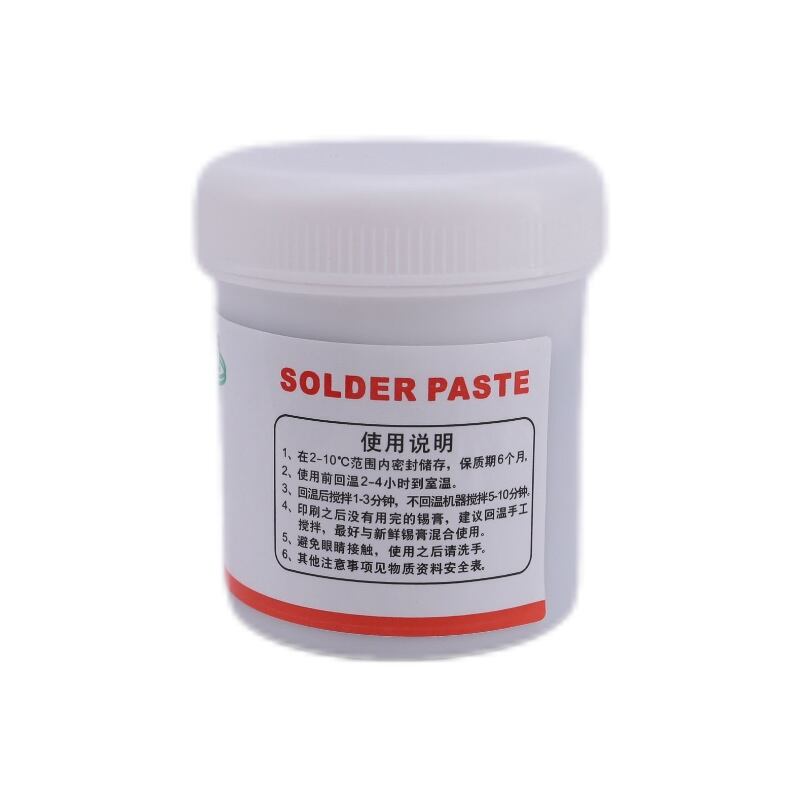Bột hàn là một thành phần quan trọng trong thế giới điện tử và công nghiệp kim loại, phục vụ như là keo giữ mọi thứ lại với nhau. Cho dù bạn là một kỹ thuật viên chuyên nghiệp hoặc một người có sở thích cuối tuần, hiểu cách sử dụng đệm hàn hiệu quả có thể cải thiện đáng kể các dự án của bạn. Hướng dẫn toàn diện này sẽ cung cấp cho bạn các mẹo, hiểu biết và thực hành tốt nhất để sử dụng mạ hàn.

Bột hàn là hỗn hợp các hạt kim loại mịn chủ yếu là hợp kim hàn và luồng. Sự kết hợp này cho phép kết nối các bề mặt kim loại một cách liền mạch. Khi được nung nóng, các hạt hàn tan chảy và chảy, tạo ra các kết nối bền vững, vĩnh viễn giữa các thành phần điện tử.
Bột hàn có nhiều chế biến khác nhau phù hợp với các ứng dụng khác nhau. Các loại phổ biến nhất bao gồm:
Món mạ hàn dựa trên chì : Được sử dụng theo truyền thống trong nhiều ứng dụng điện tử, nó cung cấp các tính chất chảy và ướt tuyệt vời. Tuy nhiên, do mối quan tâm về sức khỏe và môi trường, việc sử dụng nó đang giảm đi để ủng hộ các lựa chọn không chì.
Bột hàn không chì : Được làm từ hợp chất thiếc-thắng-bốm, loại này thân thiện hơn với môi trường nhưng có thể khó khăn hơn để làm việc do điểm nóng chảy cao hơn và đặc điểm dòng chảy khác nhau.
Các loại mạ hàn đặc biệt : Có các loại kem được xây dựng cho các ứng dụng cụ thể, chẳng hạn như các ứng dụng nhiệt độ cao, hoặc những loại đòi hỏi đặc tính nóng chảy cụ thể, chẳng hạn như trong chế tạo đồ trang sức.
Bột hàn được sử dụng trong nhiều thiết lập, bao gồm:
Máy hàn : Sắt hàn có nhiệt độ điều chỉnh là điều cần thiết để nấu chảy mỏng hàn một cách đầy đủ trong khi ngăn ngừa thiệt hại cho các thành phần.
Bơm mắm mắm : Chúng cho phép áp dụng chính xác mỡ hàn vào các khu vực được chỉ định.
Các vật liệu làm sạch : Isopropyl alcohol hoặc các chất tẩy rửa khác đảm bảo rằng bề mặt không có chất gây ô nhiễm trước khi áp dụng hàn.
Máy chèn pin và các dụng cụ tay khác : Thường cần thiết để thao tác các thành phần nhỏ.
Khi chọn mảng hàn, hãy xem xét ứng dụng, vật liệu bạn đang làm việc và kỹ thuật hàn mà bạn dự định sử dụng. Mỗi loại cung cấp các đặc điểm khác nhau về dòng chảy, dính và hồ sơ dòng chảy lại.
An toàn luôn luôn là ưu tiên hàng đầu trong bất kỳ dự án hàn nào. Các thiết bị an toàn chính bao gồm:
Kiểm soát nhiệt độ là rất quan trọng trong hàn. Nhiệt độ quá thấp có thể làm cho mỡ hàn không tan chảy đầy đủ, trong khi nhiệt độ quá cao có thể làm hỏng các thành phần nhạy cảm. Nói chung, nhiệt độ nên được thiết lập theo loại mạ hàn được sử dụng, thường khoảng 230-250 °C cho mạ hàn không chì.
Món mạ hàn dư thừa : Việc đun đun quá nhiều có thể tạo ra các khớp lộn xộn và ảnh hưởng đến quá trình hàn. Chỉ cần sử dụng đủ để bao phủ khu vực được hàn.
Bỏ qua việc chuẩn bị bề mặt : Màn nhà sạch là điều cần thiết để mối quan hệ thành công. Bất kỳ bụi hoặc dầu nào cũng có thể dẫn đến kết nối yếu.
Bỏ qua thời gian làm mát : Cho phép thời gian đủ cho khớp hàn để làm mát đúng cách. Nó đảm bảo rằng liên kết được an toàn trước khi xử lý.
Sử dụng mạ hàn hiệu quả có thể cải thiện đáng kể chất lượng và hiệu suất của các dự án điện tử của bạn. Bằng cách hiểu thành phần của nó, chọn các công cụ và vật liệu phù hợp và tuân thủ các phương pháp tốt nhất, bạn có thể đạt được các khớp hàn mạnh mẽ và đáng tin cậy. Cho dù bạn đang chế tạo một dự án điện tử DIY hoặc thực hiện sửa chữa chuyên nghiệp, làm chủ ứng dụng dán hàn là một kỹ năng vô giá sẽ giúp bạn tiết kiệm thời gian và tăng cường kết quả của bạn.
Copyright © 2024 Shenzhen Zhengxi metal Co.,LTD